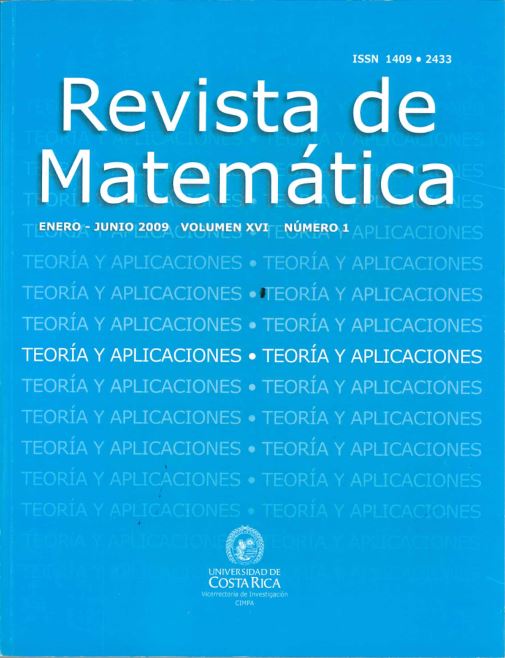Abstract
The solution of the geographical clustering problem includes a combinatorial classification of the geographical units. The aggregation proposed in this work requires an objective function that minimizes the distance between the objects that will be clustered together, in order to achieve geo-graphical compactness (a desirable goal in problems of geographical design). Because this problem is NP hard [10], it is usually
solved with heuristic methodologies that can proportionate satisfactory so-lutions in a reasonable amount of computational time, even for large problems. The main purpose of this research, it is to propose a Box-Behnken experimental design applied into the response’s surface, in order to evaluate the quality of the generated solutions. The balance and adequacy of Simulated Annealing’s parameters would help to control and direct the heuristic method to obtain good solutions for the partitioning problem.
References
Bação, F.; Lobo, V.; Painho, M. (2004) “Applying genetic algorithms to zone design”, in Springer Verlag.
Barr R.S.; Golden J.P.; Resende M.G.C.; Stewart W.R. (1995) “Designing and Reporting on Computational Experiments with Heuristics Methods”, Journal of Heuristics, 1: 9–32.
Bernábe, L.B.; López, S. (2004) “Statistical classificatory analysis applied to population zones”, 8th. World Multiconference on Systemics, Cybernetics and Informatics, Orlando.
Bernábe, L.B.; Osorio, M.A.; Duque, J.C. (2006) “Clasificación sobre zonas geográficas: un enfoque de optimización combinatoria para el problema de regionalización”, XIII CLAIO Congreso Latino-Iberoamericano de Investigación Operativa, Montevideo.
Bernábe, L.B.; Aguirre, V.R.; López, S.R. (2004) “Application of non-supervised classification to population data”, ICEEE/CIE2004, International Conference on Electrical and Electronics Engineering, Acapulco. ISBN 0-7803-8531-4.
Bernábe, L.B. (2006) “Desarrollo de un modelo para la determinación de zonificación óptima”, Proyecto de tesis doctoral en desarrollo, Posgrado de Ingeniería UNAM, Investigación de Operaciones.
Cliff, A.D.; Haggett, P.; Ord, J.K.; Bassett, K.A.; Davies, R.B. (1975), Elements of Spatial Structure: a Quantitative Approach. Cambridge University Press, Cambridge.
Hess S.W.; Samuels S.A. (1971) “Experiences with a sales districting model: criteria and implementation”, Management Science, Series B: Application 18: 41–54.
Kalcsics, J.; Nickel, S.; Schröder, M. (2005) Towards a Unified Territory Design Approach. Applications, Algorithms and GIS Integration. Universität des Saarlandes, Germany.
Kaufman, L.; Rousseeuw, P. (1987) “Clustering by means of medoids”, Statistical Data Analysis: 405–416.
Kirkpatrick, S.; Gelatt, D.; Vecchi, M.P. (1983) “Optimization by simulated annealing”, Science 220: 671–680.
Lebster, I. (1995) “Adaptative simulated annealing”, in: (ASA): lesson learned. Technical Report, Control and Cybernetic, McLean VA.
Macmillan, W.; (2001) “Redistricting in a GIS environment: an optimization algorithm using switching points”, Journal of Geographical Systems 3: 167–80.
Mehrotra, A.; Johnson, E.; Nemhauser, G. (1998) “An optimization based heuristic for political districting”, Management Science 44: 1100–1114.
Montgomery, D. (1991) Design and Analisis of Experiments, 2nd edition. Wiley, New York.
Murtagh F. (1985) “A survey of algorithms for contiguity–constrained clustering and related problems”, Computer Journal 28: 82–88.
Openshaw S.; Taylor P. (1981) “The modifiable area unit problem”, in: N. Wrigley & R. Bennett(Eds.) Quantitative Geography, London: 60–70.
Romero, D.; Burguete, J.; Martínez, E.; Velasco, J. (2004) “Parcelación del territorio nacional: un enfoque de optimización combinatoria para la construcción de marcos de muestreo en hogares”, INEGI, México.
Rousseeuw, P.J.; Hubert, M.; Struyf, A. (1997) “Clustering in an object-oriented environment”, Journal of Statistical Software 1: 2–10.
MapX Developers Guide, MapInfo corporation, Troy NY.
Takeshi, S. (2004) “A model of contiguity for spatial unit allocation”, Geographical Analysis, Institute for Geoinformation, Technical University of Viena, Austria, ISSN 0016-7363.
Zamora, A.E. (2006) “Implementación de un algoritmo compacto y homogéneo para la clasificación de zonas geográficas AGEBs bajo una interfaz gráfica”, Tesis de Ingeniería en Ciencias de la Computación, BUAP, Puebla.
Zoltners, A.; Sinha, P. (1983) “Towards a unified territory alignment: a review and model”, Management Science 29: 1237–1256.
http://www.inegi.gob.mx, Instituto Nacional de Estadística, Geografía e Infomática (INEGI), México.





